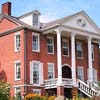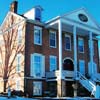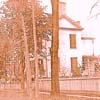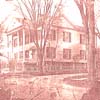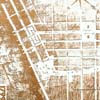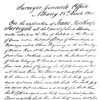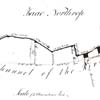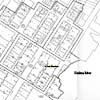Brief History of Athens to the 1930s
While Native Americans knew about the rich soil and fishing advantages of Athen's river front since prehistory, the first white-man to identify Athens' potential as an agricultural and commercial center was Robert Juet. During his travels with Henry Hudson on the Half-Moon in 1609, Juet recorded seeing fertile land in Athens with " a great store of goodly oakes, walnut trees, Chestnut trees, and Ewe trees, and a great store of slate for houses " 1 . Yet commercial inerest in the Athens area did not escalate until 1794 when three Livingston cousins, John R, Edward, and Brockhurst, along with Elihu Goodrich and Ephraim Hart purchase a large tract of land in what is now known as upper Athens village. The entreprenuers's plan was to build a model city called Esperanza which would rival the town of Hudson across the river and emerge as New York State's choice for a new capital. After an acclaimed French engineer, P. Pharmix, surveyed the land and pronounced the area to have "more important commercial and local advantages than any other place on the river", the surveyor fueled the investors' hopes that Esperanza would be not only selected as the next capital but would become the terminus of the anticipated Erie Canal system. When state legislators selected Albany instead of Esperanza as the capital, the speculator's interest waned 2 .
A new and vital human force, Isaac Northup, arrived in the region three years later. Northrup believed that location could still be one of the state’s most well-designed, viable, and prosperous communities with proper direction. After purchasing a two hundred acre tract, Northrup "used every effort to induce men of a superior class to build in his new settlement". A pragmatist as well as a speculator, Northrup knew that the economic survival of the community depended on the moneyed gentry 3 . Under Northup's guidance, the area grew rapidly and by 1805, the neighboring localities of Esperanza, Athens, and Loonenburgh incorporated into the village of Athens. Eight years later about one thousand people lived in Athens, a significant increase from the small settlement of fifty families who lived along the shore in 1794. By then, the village contained a Lutheran church, three small schools, a distillery, a few small shipping companies, and a tallow-chandlery 4 . Two of the town's largest industries, a pottery manufacture and eight brickyards, prospered from the region's extensive clay banks, plentiful wood, and cheap river transportation 5 . Ten years later, after continued expansion, state legislators carved the township of Athens out of neighboring Coxsackie and Catskill.
Athens reached the height of commercial development beginning around 1843. In that year, William Coffin established a shipyard which set "the stage for Athens's glory days as a shipbuilding center" 6 . Over the next eight years, Athens's riverfront became dotted with competing companies seeking Coffin's success. Investment in other industries followed, including the Independent Ice House (ca. 1854), the Dernell Ice Tool Company (ca. 1861), and Travis Brothers Foundry (ca. 1875) 7 . Companies already in existence, such as Clark's Pottery and the brickyards, prospered, while newer service business arrived to meet the needs of the burgeoning population 8 . By 1871, barber shops, blacksmiths, butcher shops, clothing stores, and at least one pharmacy lined Athens streets. The town's growth also
-------------------------
1.Van Vechten Vedder, J. Official History of Greene County New York. (Green County Board of Supervisors, 1927: 21). Van Vechten Vedder notes that the Erie Canal system was in the planning stages at that early date.
2.Van Vechten Vedder, J. 26.
Kingston was the first capital of New York State.
3.The farm was located in what is now known as lower Athens.
Athens Bicentennial Committee. Athens 1776 – 1976: Its People and Industry. Ed. Lynn Brunner. (1991:8).
4.Van Vechten Vedder, J., 26-27.
5.Horne, Field. The Green County. (Hensonville: Black Dome Press Copr, 1994: 133).
6.Horne, 51-52. 7.Horne, 131.
Athens Bicentennial Committee. Athens 1776-1976: Its People and Industry. Ed. Lynn Brunner. (1991: 40, 55).
8.Horne, 133-134.
